Category: Blog

Here’s some good news for every parent who’s ever worried about the kids spending too much time playing video games – those experiences just might help them get a job. Not only as a video game designer or tester, but it could also land them a solid job in the skilled trades with an industrial contracting company.
The construction industry continues to struggle to recruit and retain workers. And nowhere is that more evident than in the skilled trades, which are among the hardest jobs to fill. The problem is compounded by younger workers who show little to no interest in these fields.
But technology may offer a way to change all that. Mention welding to a young person and you’ll likely get a blank stare. But mention virtual reality and watch their eyes light up. A lot of heavy construction contractors are waking up to the possibilities and benefits of embracing technologies, such as virtual reality training, as a means of attracting and retaining the new generation of “digital natives.”
Virtual Reality 101
According to PC Magazine, Virtual Reality (VR) is usually experienced in devices such as headsets, where the user’s perceived environment is controlled by the device. Think of it as an immersive video games that places the user into computer-generated surroundings unrelated to her actual reality.
There are two forms of digital reality – VR and AR (Augmented Reality), While VR immerses a user in a completely simulated environment, AR is an addition to an actual physical space. One example of AR consists of eyeglasses that can show a technician a blueprint as an overlay to the work area to aid in placing components.
Put the two together and you’ve got Mixed Reality (MR or XR) which blends elements of both into a single application. Now apply those concepts to the realm of training for the trades.
Applications
The skilled trades are the ultimate in hands-on occupations and can greatly benefit from the ability to learn and practice a skill in a virtual environment. Similar to VR training for heavy equipment operators, digital platforms can now be found training welders, plumbers, electricians and HVAC technicians. Using welding as an example, virtual platforms are now offered that can replicate the sights, sounds and touch that come with the process. These also allow virtual welding projects to be evaluated in detail as students practice the process in a safe environment without wasting consumables or creating scrap.
Virtual Training Benefits
Training for skilled trades work is seeing increased adoption of virtual training platforms. While VR training will not completely replace traditional methods, the process offers many potential paybacks for industrial contracting companies.
Attractiveness to younger workers. Recent high school graduates are not often interested in the skilled trades, but they are responsive to most things digital. A heavy construction contractor that touts its digital training offerings will have an easier time appealing to a younger demographic.
Better retention. For a generation schooled in visual learning, VR training offers a familiar way to access and retain the knowledge required for proficiency.
Lower costs. While traditional methods of training, which normally require long apprenticeships, are costly in terms of time and materials, virtual training can reduce those expenditures through shortened training time, reduced waste and greater safety.
Faster reskilling. Need to cross train workers? With its ability to digitally replicate processes, VR can help shorten the time it takes to train employees for different roles within the company. Because VR digitizes the physical tasks and equipment associated with a particular skill, students can practice anytime and anywhere they have access to the software and a headset.
Improved safety. Many skilled trades activities carry a level of risk, even during training. VR training reduces or eliminates those risks by replacing real world actions with digital simulations. And by incorporating VR into safety training, workers can learn to identify and respond to potential problems without actually being exposed to them. One can imagine that at some point this could even contribute to better insurance rates.
As industrial contracting companies look for ways to fill their employment pipelines, digital training will grow in feasibility and adoption. Like many new technologies, VR training implementation may contribute to the difference between a company’s growth and being left behind.
Have you considered the ways a single-source industrial contractor can improve your bottom line? We’d love to have that conversation. Contact us to discuss your next project.
Subscribe and receive updates via email
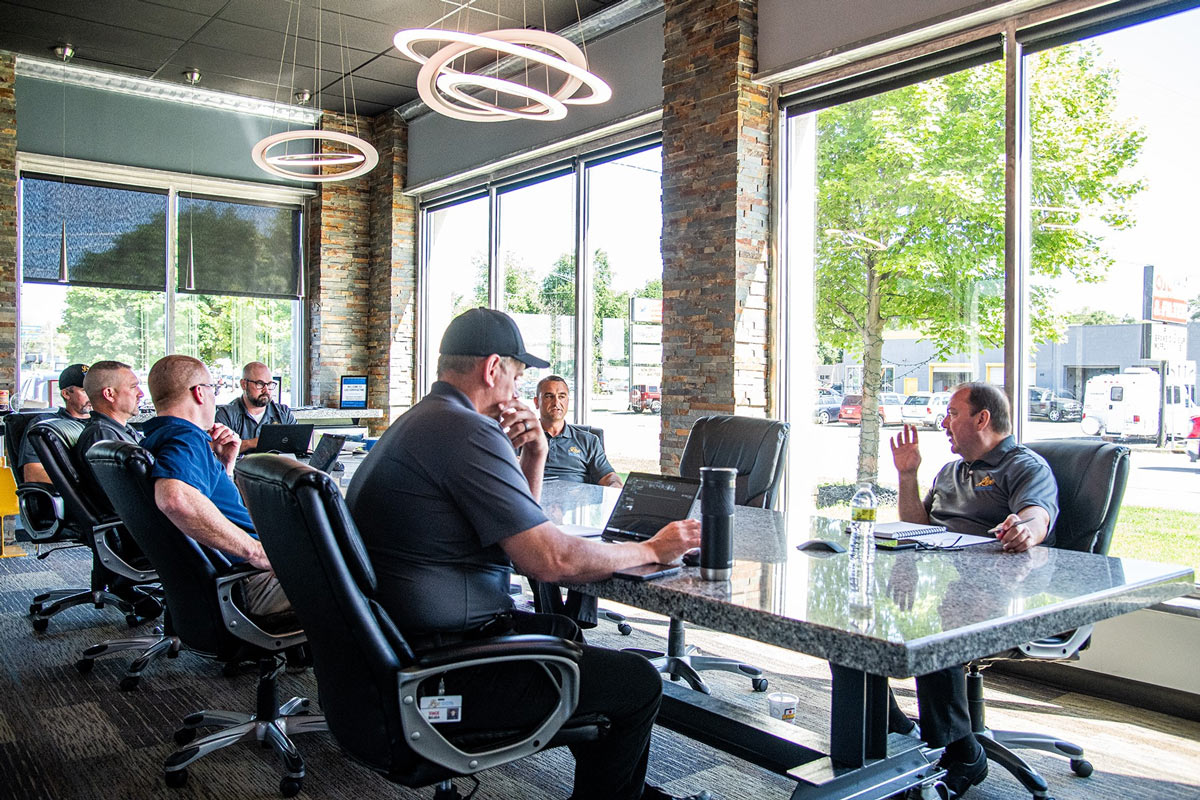
You’ve heard the old joke about speed, cost and quality. How you can only choose two, implying that all three are impossible. But is that truly the case?
Oftentimes, failures to meet this trifecta boil down to one word: inefficiency. The construction industry is notorious for this but, for the most part, seems to accept it as the status quo. Even though increasing efficiency and productivity has the potential to save more than $1.6 trillion per year industry-wide, according to a report from global management consulting firm McKinsey! With that kind of money on the table, we need to ask where the problems lie—and what we can do about them in industrial contracting.
Time Management
Think about how much time is wasted on every industrial construction project. From waiting for trades to complete their work to managing the reams of data that projects generate, construction waste doesn’t always end up in the landfill. A survey by Levelset revealed poor coordination between subcontractors as the cause of delays by more than 54 percent of contractors. Creating a schedule and communicating expectations daily with your teams can help reduce wasted time and avoid the unexpected.
Managing Supplies
With the impact of COVID-19 on the supply chain, this one is probably at the top of everyone’s list of things that cause projects to go south. We all remember the project disasters that began appearing in 2020. Supply chain efficiencies and pricing are getting better, but they’re nowhere near where they were beforehand – or where they need to be. Contingency planning coupled with inventory buildup are effective strategies to keep industrial contracting projects moving forward.
Data Management
With every new project comes tons of data that offer a real opportunity for improving efficiency. But too often that data is siloed, making it largely unavailable to the teams that need it. Connecting data in a single, accessible location can boost productivity and avoid missing and incorrect information that often results in rework.
Design
The design phase of projects consumes massive amounts of time, especially when considered as a part of the whole. This is frequently the result of custom scopes for every project. While each new project carries its own unique expectations, there are also opportunities for standardization and repeatability that could significantly raise productivity. Creating libraries of optimized designs can reduce the length of the design phase.
Execution
At the end of the day, construction is about actually building something. Making that happen requires managing the project, machinery, materials and people. Successful execution calls for rigorous planning before work begins to ensure milestones are met on time and on budget. Part of the planning process is the establishment of key performance indicators (KPIs). KPIs augmented with future-facing metrics can identify and reduce variance. A sometimes overlooked opportunity for efficiency gains in execution is in the process of moving equipment, people and other resources to the site prior to starting the work, which should be an intentional part of preconstruction planning.
Technology
While our industry lags behind other industries in the adoption of technology, there are signs of change. The usage of building information modeling (BIM) software including digital twins is becoming more commonplace as firms look for ways to improve efficiency and outcomes. Digital twins provide a virtual representation of a project that can be updated in real-time. Their utility spans the entire project lifecycle, from preparing initial designs to comparing as-built to plan. Digital twins can be game changers for project success, but for them to work properly, any changes made, regardless of who they are made by, must be integrated into the master twins to avoid inaccuracies.
Communications
Construction projects require coordination of all the activities going on at any given time. With the myriad layers of projects, it’s critical for every player to be reading from the same page. Communications breakdowns throw confusion into the project matrix, and are a leading cause of rework. If you’re being hampered by outmoded forms of communication, it’s probably time to consider digital options.
Read more: Industrial Contracting Collaboration – Working Better Together
Workflows
Workflows involve identifying, assigning and detailing the tasks necessary for project completion and then effectively communicating the details across project teams. When they work well, workflows can help reduce inefficiencies by streamlining processes and improving quality. The best workflows are standardized, collaborative, automated, integrated and contribute to timely process and resource adjustment.
Monitoring and Measuring Efficiency
Seeing the fruits of your efficiency push requires continual monitoring and measuring. Start with your project KPIs and compare with progress reports on the work. If you’ve measured effectively, the results can identify areas for improvement and help you make better, data-driven decisions as the work progresses.
Working with a single-source contractor can improve efficiency by simplifying the construction process. Find out what that can mean for your next job.
Subscribe and receive updates via email
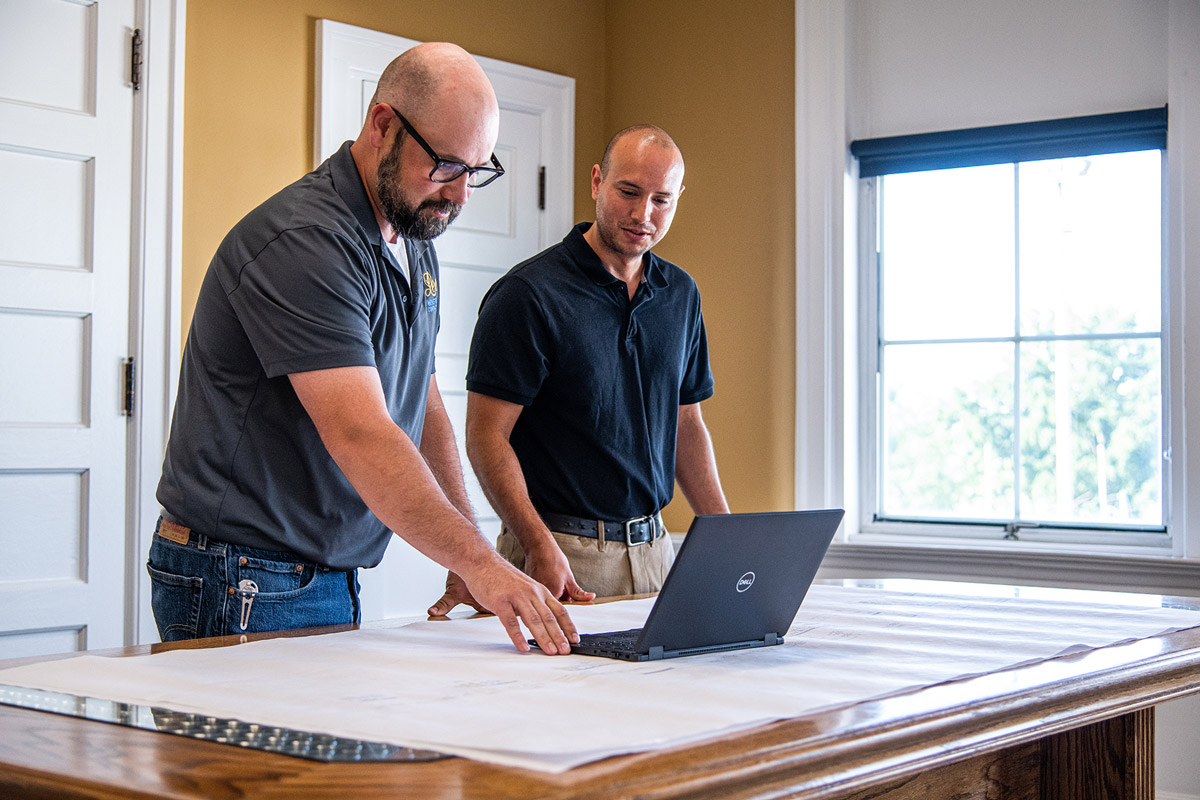
Timelines, milestones and deadlines cause many sleepless nights for industrial contracting project managers, especially as the substantial completion date approaches. It’s challenging enough to meet key milestones in normal times, but given the challenges of the current contracting environment, it can be the stuff of nightmares and potential liquidated damages.
Project management company TeamStage reports more than 61 percent of US construction project owners say only 25 percent of projects were delivered within 10 percent of the original timeline. What management strategies can be implemented to overcome these obstacles?
Planning and Tracking
Contracting projects exist in a fluid state from start to finish and require thorough planning and tracking to meet project timelines. There are three types of planning needed for a successful construction project.
Operational Planning involves evaluating resource availability, identifying shortfalls and scheduling work activities to meet contract timelines.
Safety Planning identifies site hazards and develops procedures for avoidance and mitigation.
Tracking is ongoing during the construction phase and is used to determine whether work is being carried out properly and on schedule.
Asking “What if?” during planning activities can help identify potential problems and provides an opportunity to develop resolution strategies.
Modern project management software can provide a seamless method for project control. These tools range from simple digital spreadsheets all the way to complex solutions that present a continuously-updated dashboard view of every aspect of a project.
Optimizing Scheduling
A construction project as a whole is daunting. Breaking down the process into smaller, more manageable components by creating a work breakdown structure (WBS) helps meet milestones and stay on target for project timelines. The use of Gantt charts and other visual aids assist in schedule optimization and are especially helpful as the project evolves.
For most work, the critical path method will give the insight required to control scheduling. Using critical path as a part of contingency planning, project sequencing becomes apparent and timeline adjustments can be made in response to delays caused by weather, supply chain interruptions, change orders and other unexpected events.
Communications
Clear and effective communications can be the deciding point between project success and profitability and sub-par performance. Deciding early on what information needs to be communicated – and how often it is shared – will help identify problems before they can spiral out of control.
Project success depends on relationships that have open and honest communications. Create a safe environment where problems can be communicated without damaging the trust and respect necessary to successful outcomes.
While communications challenges such as handwritten notes, missed phone calls, unread emails and siloed information characterized project communications in the past, today’s technologies can nearly eliminate the confusion that results from poor communication.
Collaborative software goes beyond simply passing information from team to team. Digital offerings can help avoid misunderstandings and conflicts by providing a single source of project truth accessible by all teams regardless of device or location.
Regular team meetings and progress updates also contribute to maintaining clear and concise communications. While it’s tempting to rely on digital tools to supplement or even supplant meetings, time should be carved out for face-to-face gatherings on a regular basis.
Resource Availability
Manpower and material issues, particularly shortages of skilled tradespersons, continue to dog industrial contracting and negatively affect timeline adherence. According to Associated General Contractors, 80 percent of contractors continue to have labor issues, even with increased pay, bonuses and benefits. Supply chain issues also persist and are not expected to ease in the near term, affecting schedules and resulting in price swings that can be the deciding factor in whether new projects are undertaken.
When considering a new project, ask the hard risk assessment questions upfront. Does the contract present a realistic timeline that can be met with current resources? What happens if supplies are delivered late or are not available? Companies that don’t ask or adequately answer these types of questions can be setting themselves up for failure.
Risk assessment is a critical component of project planning. Creating a proactive risk management process provides a framework to compare available resources with project requirements. Include use of a risk register in the process to identify, analyze and map out risks before they affect project execution.
Project timelines ultimately control every phase of industrial contracting. Creating and executing effective scheduling, communications and resource strategies from the start are proven ways to ensure meeting project timelines.
Lee Contracting has never missed a deadline in our long history. Contact us to put the Lee Advantage to work for you.
Subscribe and receive updates via email

Industrial contracting projects usually require the coordination of multiple trades, such as electricians, plumbers and HVAC technicians. But building the environment of trust and accountability necessary for working together can be difficult
Every team on a project has the same goal: the completion of the job on time and within budget. Effective collaboration is the key to orchestrating a successful project and keeping teams on track.
Bring Teams in Early
Even though project plans and details are fixed when they’re let out for bid, every contractor has a particular process and method they apply. The same is true with the skilled trades. And just as the project benefits when contractors bring their knowledge into the design and planning phase, receiving input from the trades can help identify and avoid problems that can negatively affect project execution.
Set Clear Goals
While you might think that having plans in hand would be enough to ensure a successful project, that’s not always the case. Two people looking at the same plan set can have very different visions of how things should be done. Regular team meetings from the start can help ensure everyone is on the same page and working from the same interpretation of what needs to happen. Define goals that clearly state what constitutes success both for the project and individual teams.
Monitor and Control
The monitoring and control process in industrial contracting helps identify problems and allows you to make needed adjustments. When these occur, be sure to reevaluate and update the project plan as necessary and communicate changes to all teams. Using digital construction tools, such as Building Information Modeling (BIM) software, provides detailed project monitoring, makes project information accessible to all stakeholders and evolves to reflect changes in design or as-built in real time. A stringent monitoring and control process is one of the best ways to avoid costly errors and rework.
Communicate
Individual trades do not exist in a vacuum. For this reason, it is extremely important that project progress be communicated regularly and clearly. Especially when changes are made to the project. Think of the way a spreadsheet with formulas works: whenever a change is made in one section, every affected section is updated to reflect that change. Your trades teams need to know what’s happening to fit their work with others.
Talk About the Project as a Whole
Reminding team members of what they are working towards, and their role in its completion, can be an effective tool for motivation. Seeing the big picture helps everyone stay focused and committed to reaching the goal.
Include Accountability
The work of every team is dependent on the successful work of every other. It’s important to communicate performance expectations and hold teams accountable for fulfilling their responsibilities.
Conflict Resolution
When you have multiple trades and companies involved in an industrial construction project, the possibility of conflict will inevitably exist. With that given, let’s look at ways to deal with conflicts when they occur.
Project scheduling is often a source of conflict. The sequencing of work typically requires that one trade wait for completion of another trade’s activities before they can begin working. It may be a good idea to discuss scheduling with each of the trades working on your project so everyone can anticipate when they will be able to begin their part. When delays happen, be sure to communicate the information to all affected parties so they can adjust their team’s scheduling.
Be involved. There is no such thing as a small conflict. Project managers should take part in resolving issues, even if those involved are left to work out the problem themselves.
Know what’s going on. Conflicts can result from a variety of issues, from differing interpretations of plans to poor communications. It’s important to find out the root of the problem and then listen to those involved. Actively listening demonstrates your commitment to all involved in resolving the problem.
Keep the project in focus. Conflicts that devolve into feelings can quickly wreck a timeline, so keep the discussion on a professional level and avoid allowing personalities to rule. Resist the impulse to find who’s to blame; concentrate instead on the best way to resolve the conflict and get the project back on track.
Collaboration is crucial for achieving successful outcomes in industrial contracting projects. It requires effective communication, mutual respect and a shared commitment to the project’s goals. By embracing these principles, individuals and teams can work together seamlessly, overcome challenges and deliver high-quality results.
Put the power of a single team to work on your next project. Contact us today.
Subscribe and receive updates via email

The rapid rise of new technologies, techniques and safety protocols in industrial contracting is changing the face of the industry. Confronted with this transformation, it’s vital for firms to stay ahead of what’s new and what’s changing in order to stay competitive.
Continuing education (CE) offers a proven way for companies to retain their edge and for tradespeople to improve their career opportunities in a changing environment. While educational opportunities were in the past accessible only by a few and usually required a physical presence, the Internet and other technologies have made an unimaginable wealth of information available to just about everyone.
How CE Benefits Industrial Contracting Firms
Industrial contractors are under increasing pressure from customers, regulators and competitors. Ongoing employee education is an effective strategy firms can employ to maintain and improve their prospects.
- CE builds your reputation. Remaining top of mind for new projects and/or requests for proposals is often a matter of a company’s reputation. Investment in CE can help with your need to differentiate your firm from your competitors.
- CE fires innovation. A highly-skilled and trained workforce can envision new solutions to project problems and discover hidden opportunities.
- CE helps retain skilled workers. Investing in employee development is a proven way to retain workers. According to education service provider Lorman®, companies with strong learning cultures see retention rate increases of 30-50%.
- CE helps overcome labor shortages. Today’s workforce is looking for firms that are truly interested in them. Offering CE as part of the hiring package makes your firm more attractive.
- CE is needed to attract a new generation of workers. New technologies are raising awareness of construction as a career. CE is critical to converting that interest into employment.
- CE improves project quality and efficiency. A highly-trained workforce has a greater understanding of project requirements and is better positioned for success.
- CE enhances project safety. Ongoing safety training that includes regulatory awareness reduces the chances of injuries and resulting delays.
While most CE focuses on specific processes and techniques, there are other areas that should also be included. “Soft skills” such as communications, leadership, adaptability, flexibility and problem-solving add value to every employee. They should be a regular part of a company’s continuing education efforts.
CE for the Skilled Trades
Continuing education can have a massive impact on your career as a skilled trades professional. By increasing your knowledge and upskilling your abilities, you put yourself at a competitive advantage in the workforce and increase your value to your company. Continued training can not only increase your earnings potential, but your job security as well.
Financial Barriers
A lack of financial resources was usually top of the list of reasons for missing out on educational opportunities. But with the advent of less expensive online services, classes and training, financial considerations are much more manageable.
Access to Training
There’s never been an easier time to improve your knowledge and skill sets. You’ll find a wealth of industry publications, including blogs, white papers and more available online. Online courses and special events, such as manufacturer-sponsored webinars and association conferences offer great opportunities to learn about new products, techniques and even regulatory changes. Professional and trade organizations often offer online forums where you can ask questions and get meaningful answers from your peers and others.
Time Constraints
Finding the time to match your work schedule with school schedules often meant missing out on educational opportunities. The advent of on-demand educational resources has mostly eliminated time considerations as a barrier to career advancement. Flexible scheduling enables you to continue working while building your education.
Resistance to Change
The skilled trades have been somewhat hesitant to view continuing education as important to their growth and development, preferring on-the-job learning from experienced co-workers. But with the speed of change we’re experiencing now and the growth of competition in industrial contracting, most tradespeople understand that continued skills and abilities training is a must to maintain their viability in the workforce.
As the industrial contracting industry continues to experience the effects of internal and external forces driving change, firms need every advantage they can muster to stay competitive. A strong commitment to continuing education can be the difference between developing industry leadership and getting left by the pack.
Lee Contracting employees grow their expertise with a variety of continuing education opportunities. Visit our Careers page to learn more!
Subscribe and receive updates via email
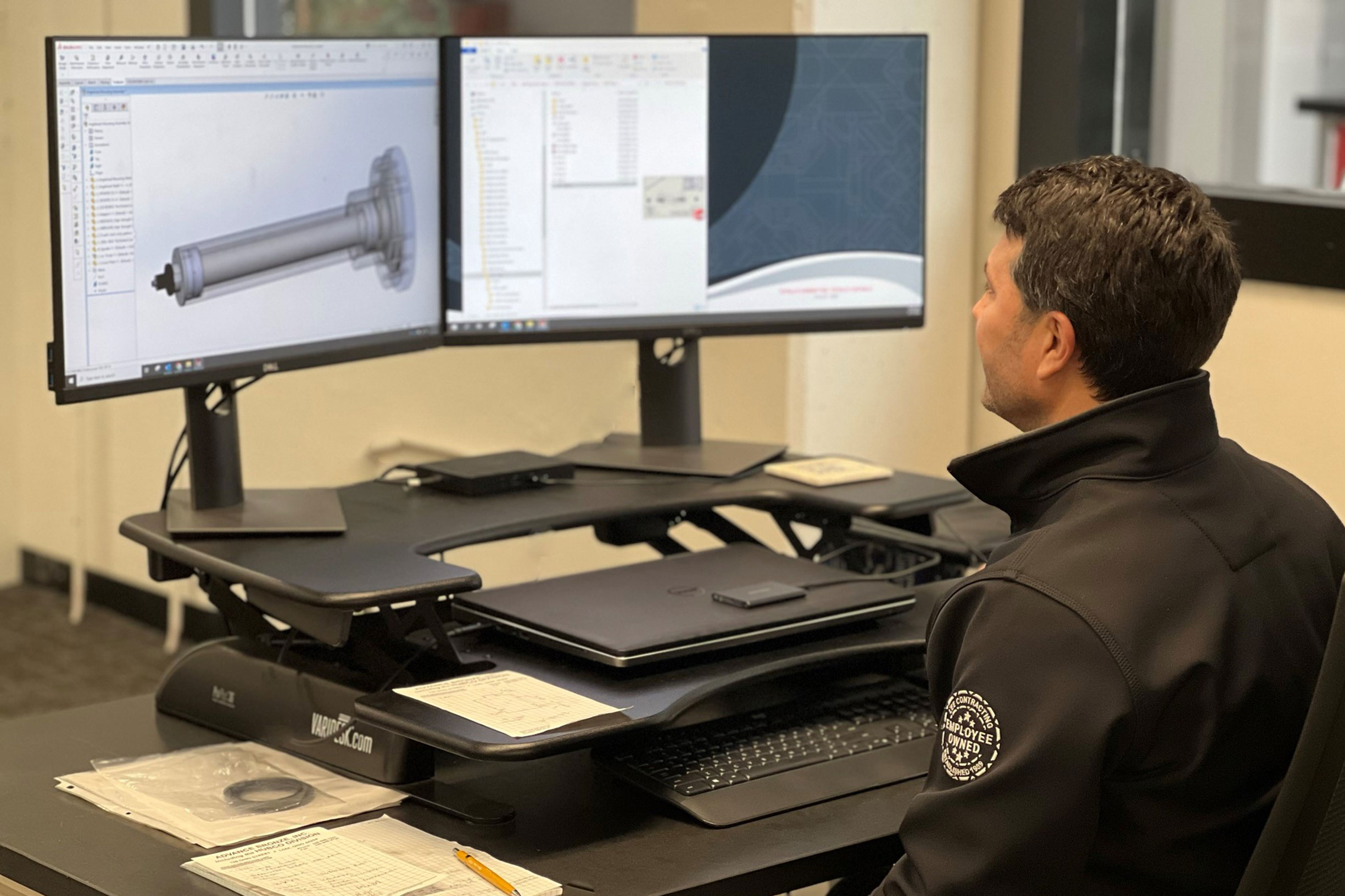
Medicine? Law? Construction?
One of the most important decisions we ever make is our choice of a career. We struggle to find the occupation that will be the perfect fit for our interests and abilities. For many finishing high school or entering their first year of college, the answers don’t come easily.
Richard DeShon’s career path became clear to him only after an unexpected pivot:
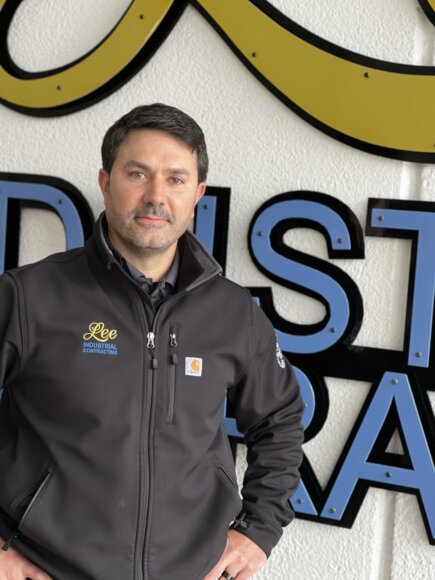
“I had been working in construction for a family member since I was 12,” said DeShon. “I loved it, but my family always told me I needed to get an education.” Following his family’s advice, he pursued a degree in neurology, but found it wasn’t a good fit. He withdrew from the program and took a job in a manufacturing facility while he sorted out his career direction. It was there he began asking the questions that would lead him to the field of engineering.
DeShon took advantage of his time at the manufacturer to talk with his coworkers about their jobs. He was particularly curious about the work of the company’s engineers. The more he learned from them, the more interested he became in the field. With his employer’s support, DeShon earned both his Bachelor’s and Master’s in industrial engineering at Wayne State University. In 2021, he joined Lee Contracting as an engineer.
What is an Engineer?
Engineers are the original problem solvers. From our earliest days, people have sought answers to practical questions. Questions like, “How do we move water uphill?” or “What’s the most efficient way to transport heavy loads?” Even “How can we put a man on the moon?” For generations, engineers have said with deep satisfaction, “Problem solved.”
If you have an aptitude and interest in math, an engineering career could be right for you. Engineers work in a variety of industries and play major roles in how the world gets built and keeps running.
Engineering at Lee
Because Lee is a single-source industrial contractor, we are called on to solve complex problems in a multitude of industries. From aerospace and automotive manufacturing to energy, environmental and heavy industrial projects, our engineers can be found wherever people need answers.
We design and build everything from facility piping systems to completely new factories, and design and execute critical maintenance programs. With our depth of real-world experience, we’ve developed a strong reputation for our value engineering prowess.
Lee is well known for teams trained to work in many disciplines. And, like their tradesperson counterparts, Lee engineers can find themselves working in one industry one day and a completely different one the next.
“Most design engineers work in static environments,” DeShon said. “Lee is dynamic; I’m always moving, always on the phone interacting with people on current or upcoming projects.”
DeShon came to work with Lee during the pandemic and soon found himself attracted by the sheer diversity of the projects he encountered. One he particularly remembers was a company that was having problems with parts failures. As the company contact was describing the parts, DeShon was designing the part on his computer. When the contact saw his design, “he almost fell out of his chair. He was ecstatic and I was like, ‘yeah this is what we do’.”
“I’m always amazed at how well our company responds [to client needs],” DeShon commented. “How we can take something that weighs 500,000 lbs and move it in a day. That blows my mind; how we can plan and execute projects that most people think are impossible.”
In addition to his duties with Lee, DeShon is also an adjunct professor at St. Clair County Community College in Port Huron. He often addresses his students about their career direction and tells them, “If you want something that will always be here, consider engineering.”
Because of the variety of projects at Lee, DeShon sees more opportunity here than any company he’s ever been at. He is particularly impressed by how Lee’s cross-functional teams can come together and perform massive, multimillion dollar projects quickly and effectively. “I’ve been blessed with a good group of guys and hope it only gets better.”
Considering an engineering career—or looking for a company that can challenge your professional skills? Talk to us today.
Subscribe and receive updates via email

In 2016, Joe Wesley was rethinking his career choice. Armed with a bachelor’s degree in sports management, he was running a health and fitness club. But he wanted something more hands-on and wanted to build things. The opportunity to do both began when he joined the Lee Contracting family as an electrical shop assistant in October 2017.
“It was kind of a culture shock,” Wesley said. “When I started, I didn’t even know what a wing nut was. I was 27 at the time and was working with 23-year-olds that were already foremen.”
Right Time, Right Choice
Wesley couldn’t have picked a better time to enter the construction industry. The availability of skilled trades jobs far exceeds the number of qualified workers available to fill critical positions.
Faced with this challenge, Lee Contracting decided the best way to combat the shortfall was to increase investment in upskilling current team members, along with enhancing the training of new employees through apprenticeships. Lee’s first venture into apprenticeships was the registration of an electrician program with the Department of Labor in 2010.
The Value of Apprenticeships
Lee knows that investing in their employees and training in-house builds value for each team member and the company at large. Taking advantage of mentorships from skilled journeymen while earning a solid wage is a testimony to Lee’s use of career pathing. Career pathing defines an employee’s career trajectory at the outset, identifying the skills and experience an employee must possess for a successful and rewarding job experience. Career pathing at Lee is comprehensive in that it includes opportunities to learn multiple skills and work outside a particular trade.
Apprenticing at Lee is not only for new hires. An experienced pipefitting foreman recently joined the program because he wanted to demonstrate how apprenticeships help employees reach their career goals.
The Lee Approach
Today, Lee Contracting conducts apprenticeship programs in electrical, pipefitting and HVAC. Lee has partnered with Southeast Michigan Construction Academy (SEMCA) and Grand Rapids Community College to provide classroom training for electricians. Additionally, Lee has teamed up with Macomb Community College to offer classroom work for pipefitting and HVAC. Lee covers the costs for tuition and related books/materials, and program participants repay a minimal portion via payroll deductions to encourage program engagement.
Lee apprenticeships mentor and nurture employees on their way to journeyman status. During the program, participants’ skills are continually challenged based on the job they are completing. The programs include both classroom and on-the-job training:
- Electrical: 4 years, 8,000 hours on the job, 576 hours in the classroom
- Pipefitter: 4 years, 8,000 hours on the job, 576 hours in the classroom
- HVAC: 3 years, 6,000 hours on the job, 432 hours in the classroom
Skilled trades apprenticeships allow students to develop new skills while receiving guaranteed wage increases and preparing them for successful careers and opportunities for promotions. The programs take participants through a structured curriculum that aligns with industry standards for high-demand occupations. Roughly 28% of Lee employees have completed apprenticeships since the program began.
Apprenticeship Qualifications
Persons interested in a Lee apprenticeship must meet the minimum qualifications for acceptance into their program of choice:
- Applicants must be at least 18 years of age.
- A high school diploma or GED equivalency is required. Applicant must provide an official transcript(s) for high school and post high school education and training. All GED records must be submitted if applicable.
- Applicants must submit a DD-214 to verify military training/experience if they are a veteran and wish to receive consideration for such training/experience.
- Applicants will be physically capable of performing the essential functions of the apprenticeship program, with or without reasonable accommodation, and without posing a direct threat to the health and safety of the individual or others.
- A valid driver’s license is required due to having to travel to customer sites intra or inter-state that will require the operation of a company vehicle.
- Applicants must submit to a criminal background check and Motor Vehicle Report.
All Lee apprentices receive full pay at or above established federal and/or state guidelines for apprentices in that respective trade. As employees, they are also eligible for full benefits on the first day of the month following 60 days of employment, including:
- Comprehensive Training Programs
- Paid Holidays Upon Hire
- Competitive Medical, Dental, and Vision Insurance
- HSA with Employer Contribution
- Paid Time Off
- Company Paid Short-Term Disability & Life Insurance
- Safety Bonus Program
- Employee Stock Ownership Program
- Work Travel Incentive
- Holiday Bonus
Developing Future Leaders
Lee is committed to everyday excellence in all facets of its business operations. Apprenticeship opportunities reinforce this commitment by providing a strong foundation of training, mentorship and regular feedback. Successful program completion helps forge graduates into quality journeymen who will eventually become the next generation of leaders and mentors.
Wesley, an Electrical Foreman since February 2022, looks back on his apprenticeship experience. “It’s been a fun ride, for sure, and I’ve had a lot of help along the way,” he said. “There are a lot of smart guys at Lee and anytime I got to work with them, learn from them, it was a good day.”
An apprenticeship with Lee Contracting can open doors to some of the greatest opportunities in the construction industry. Learn more by contacting us today.
Subscribe and receive updates via email
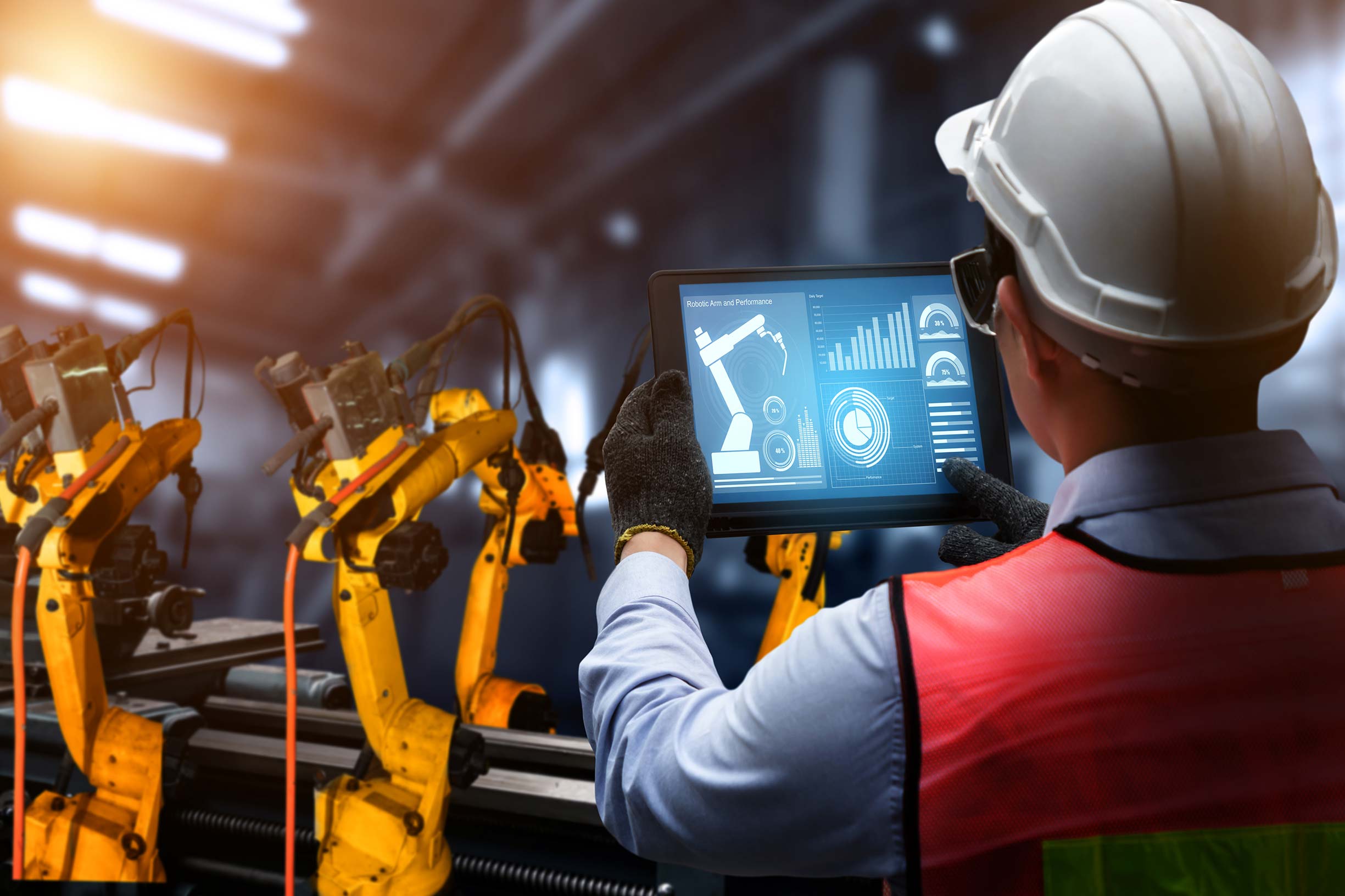
Rapid advances in construction-related technology are helping many industrial contractors respond to long-standing industry problems such as labor shortages, jobsite to office communications and more. From advanced BIM to drone surveying and robots, the industry is poised for changes that will forever alter the way things get built.
Augmented Reality
The ability to visualize anything from a building component to a completed project is another trend that will positively affect construction in the coming years. The technology is still in its early stages, but rapid advances and falling hardware prices will make it more attractive to construction firms seeking to lower costs and improve productivity.
Automated Equipment
Labor shortages are especially acute in the skilled trades. Facing tight production schedules with reduced manpower, many firms are increasing their investment in machine automation. Automated equipment such as saws, tube benders and beam processors help produce more products with less labor, increase efficiency and avoid process bottlenecks.
Building Information Modeling (BIM)
BIM is the latest thing in construction, right? Actually, today’s BIM is the great-great-grandchild of a computer program called Pronto, the first computer-aided manufacturing (CAM) program, created in 1957. 1963 saw the release of the first computer-aided design (CAD) program called Sketchpad, which broke ground for human-computer interaction and contributed heavily to development of the computer graphics critical to clearly communicating project details. From these humble beginnings, today’s BIM spans the complete project scope, including:
- 3D BIM, which uses spatial dimensions to enable virtual visualizations, clash detection and material scheduling.
- 4D BIM adds the element of time to 3D representations, improving collaboration, communications, and verification and revealing potential bottlenecks.
- 5D BIM integrates cost into the mix, so that changes in design and other factors are immediately reflected across project financial datasets.
Cloud-Based Collaboration
As construction project complexity increases, effective communications become more critical to project success. Storing and accessing the massive amounts of data associated with construction projects is a natural fit for cloud capabilities, making shared project data available to teams and individuals regardless of their physical location.
Digital Twins
The ability to virtually build something before breaking ground is the hallmark of today’s digital twins. In much the same way as spreadsheets, digital twins capture changes in project data to update virtual representations of projects throughout the lifecycle. The combination of BIM and integrated digital twins has the potential to significantly improve project performance and workflows while reducing errors and rework.
Drones
Before the advent of commercial drones, site and project surveys took days to months to complete. Drone technology now makes it possible to complete surveys in a matter of hours and can interface with digital twins to give near real-time updates to as-built versus design.
Modular Construction
Another area that will see significant growth in coming years is off-site prefabrication of project components. Already a common feature in shipbuilding, modular construction helps avoid weather and other delays, speeds project completion and offers standardization and quality improvement.
Robotics
Will robot workers be the solution to construction’s long-standing problem of labor shortages, especially in the skilled trades? While initial costs are high, robots in construction may one day be as commonplace as hard hats and shovels.
Robotics is not limited to self-performing machines for welding or laying block, however. The term also applies to wearable metal frameworks that can augment a worker’s strength. First developed for military applications, so called “exoskeletons” are slowly finding their way onto jobsites. From passive single arm support to full-body powered suits, this form of robotics can increase productivity while lowering injury rates among workers.
Self-Healing Concrete
Concrete is the most widely-used building material in the world and has been for centuries. But it’s not perfect. Studies of methods of designing concrete capable of healing itself are being conducted worldwide to evaluate the possibility of addressing concrete’s faults. This concrete is more water resistant, lasts longer and can handle more stress than conventional concrete. Standardization of the product could significantly reduce maintenance and repair costs and extend the life of structures.
Read More: 7 Ways to Refresh Your Facility for 2023 Without Breaking Your Budget.
The Internet of Things (IoT)
Supply chain problems have dogged the construction industry for years, and were only made worse by the rise of the global pandemic. The IoT enables users to track and monitor materials across the supply chain and alert decision makers when a delay occurs. With this information, managers can revise plans on the fly and effectively adapt to the resultant scheduling problems.
Future Now
In a sense, the rapid advancement of construction technologies couldn’t come at a better time. As firms scramble to attract and retain new employees, they are often faced with candidates who are skilled in technology — but have little interest in construction. These so-called ‘digital natives’ have been immersed in technology since childhood and are looking for careers that allow them to put those skills into practice. Want to see your job seeker pool grow exponentially? Show candidates your tech!
No matter the challenges you face, the Lee Contracting team has the equipment, inventory and experience to make your job easier. Contact us to discuss your next project.
Subscribe and receive updates via email

In light of the current manufacturing environment, a facility refresh may be the last thing on your mind. But even with supply chain problems, rising material costs, labor shortages and other pressures on your organization, finding opportunities for improving and maintaining your plant can help counter financial challenges.
Layout
If it’s been awhile since you considered the layout of your facility, it could be time for a revisit. Most any facility that’s been in operation for several years likely has opportunities for improvement, and even small changes to layout can have a big impact. You may have given a lot of thought to the horizontal dimension of your operations, but what about the vertical? Does your current layout take full advantage of the space above your production areas? Adding or modifying conveyors, platforms, catwalks or crossovers can help create a better workflow while improving productivity and safety.
Read More: Safety First in Industrial Contracting: Do’s and Don’ts From Safety Experts.
Gas Systems
With gas prices constantly fluctuating, you need to squeeze every ounce of energy out of your gas lines, and the last thing you need is an undetected leak. Start by matching the right type of detector with the application. From catalytic bead to ultrasonic units, find the type designed for the gases in your particular environment. If you don’t have them already, real-time gas detection systems produce immediate results and feedback, and are required in certain types of operations for protection of personnel and property.
Air Systems
Compressed air systems are a major factor in the cost of production, so ferreting out leaks should be top of your list for regular inspections. Systems should be checked around compressors, tanks and the entire air piping distribution. While difficult to see or hear, you may be amazed at the before and after results from a proper air pressure holding test and any required repairs. Depending on the shape of your current system, you could also be surprised at how quickly ROI is realized from this process.
Electrical Systems
Still lighting your facility with high pressure sodium or metal halide fixtures? If so, you may be missing significant savings in your overall energy costs. Switching your lighting to contemporary LED fixtures can greatly reduce energy costs while improving safety and your plant’s environmental impact. As a bonus for switching, there are many utility rebate programs available throughout the year that can offset your capital investment for this upgrade. Contact your energy supplier to find out if they offer any rebate programs.
HVAC Systems
Well functioning HVAC systems are critical for some manufacturing processes, such as food or pharmaceutical production. But regardless of what you make, a faulty system can be contributing to high energy costs that could be reduced. While you may be tempted to install new systems throughout the facility, a complete replacement may not be in the budget. Running system evaluations and ROI studies could indicate a better return on investment from replacing motor starters with variable speed drives. If your studies suggest a complete replacement with new, energy efficient systems, utility rebates should be researched to defray some of the cost of your project.
Water Systems
Water issues continue to elevate sourcing and discharge costs for industrial facilities. Do you have a water conservation strategy in place? Start by checking for leaks in equipment and piping systems, and set up a program to periodically check for opportunities to find and repair leaks. You should also be on the lookout for ways to minimize water use, such as installing monitoring devices or upgrading to equipment that more efficiently uses this valuable resource. Opportunities for reusing water should be examined thoroughly, as the practice can help reduce sourcing costs along with treatment and discharge costs.
Regular Maintenance
You might not think of your maintenance operations as part of a facility refresh. Reviewing and, if necessary, refining your maintenance program can help you discover opportunities for increased efficiency and reduced operating costs. Consider creating a predictive maintenance (PdM) plan which looks at numerous factors to avoid unplanned downtime and equipment failures while reducing unnecessary upkeep.
Read about our press maintenance and repair project.
Regardless of the scope of your refresh needs, the Lee team has the in-house experience and resources to deliver a turn-key product that will exceed your expectations. Our value engineering process and deep expertise help us produce the best and most cost efficient solution to any problem.
Considering a facility refresh? Let the experts at Lee find the ways to make your project more efficient and cost effective.
Subscribe and receive updates via email
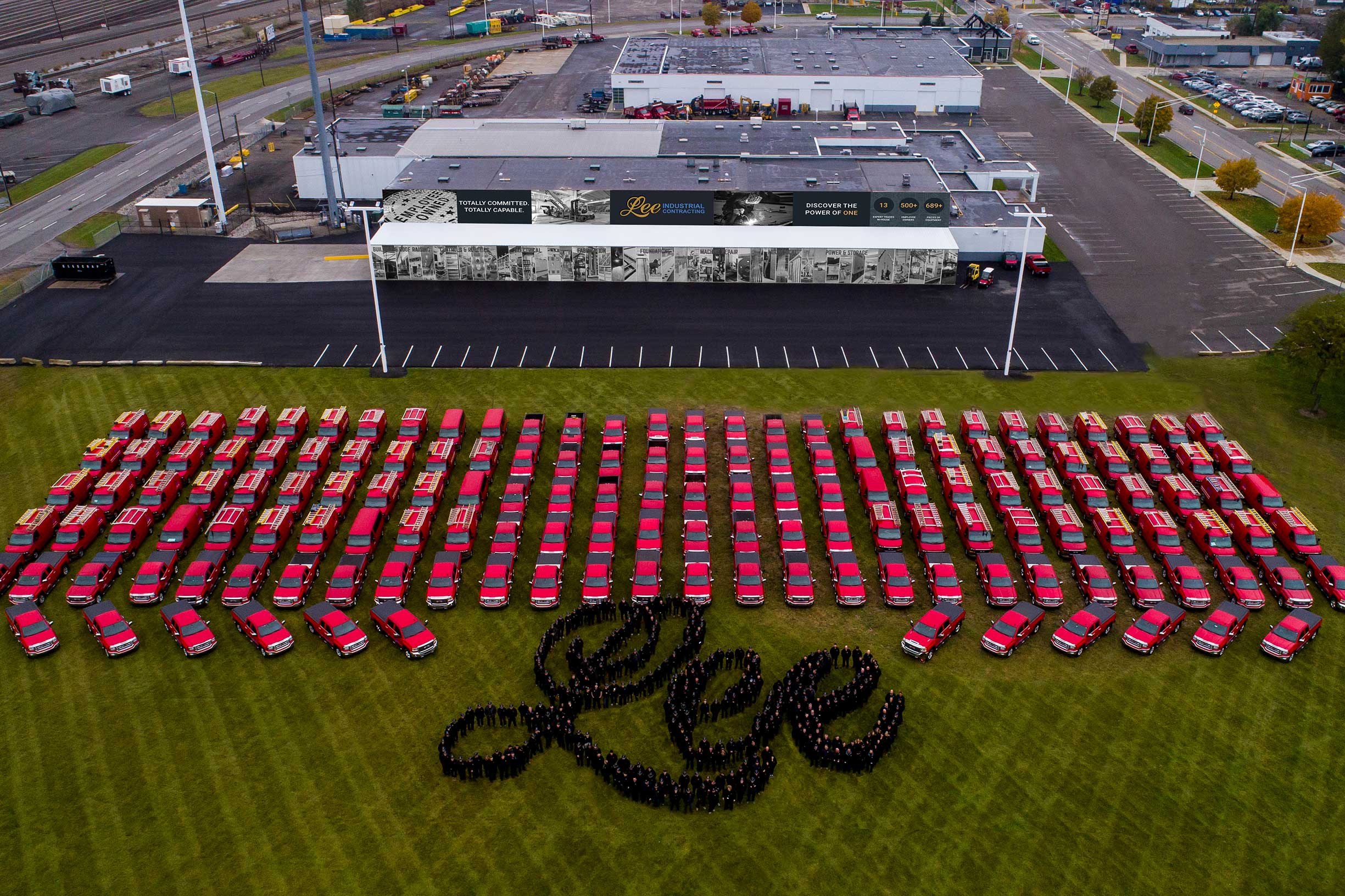
America is a nation of business owners. From one-person shops to major corporations, our history is a continuing story of people who put it all on the line to create success.
But the barriers to starting and maintaining a successful business that survives the long haul are formidable. From having the right idea to securing the financing and other resources needed to make it happen, starting and building a business is a hard road.
What if you could become a business owner simply by going to work for a particular company? Sound like a pipe dream? For thousands of American workers, that dream is a reality. A reality they are using to build real wealth for themselves and their families.
How do they do it? The answer is simple: they work for companies that are 100 percent owned by the employees themselves. Employee ownership (EO) through Employee Stock Ownership Plans (ESOP) provides workers with wealth-building capabilities and retirement savings by providing stock in the company at no cost to the employee.
Read More: Employee Ownership at Lee.
The surprising history of EOs
We owe it to Ben Franklin for the concept of an employee-owned business. In 1733, Franklin set up print shops across several cities in which he provided the money needed for getting started along with one-third of the expenses for the first six years. At the end of that period, employees could choose to use profits to purchase equipment or buy their shop. The idea spread and, by the 1800s, even Sears Roebuck was in the game, offering their employees the opportunity to own stock in the company.
Today, there are more than an estimated 6.600 employee-owned businesses across the country, according to the National Center for Employee Ownership (NCEO). Together, those companies provide jobs for more than 14 million workers. What makes ESOPs so attractive?
ESOPs contribute to financial security
In the recent past, many workers’ financial foundations have been hard hit, first by the recession of 2010 and then by the loss of work resulting from the worldwide COVID-19 pandemic. Despite these setbacks, EOs believe their financial situations have improved compared to non-EOs. They’re not wrong: statistics compiled by the U.S. Department of Labor’s Employee Benefits Security Administration (EBSA) showed an average 12.9 percent higher return to an employee’s overall retirement plan from ESOPs compared to 401(k) plans.
EOs have better job security
When the pandemic hit, many American workers found themselves out of work. But even during the pandemic, EO businesses did a much better job of keeping their workers employed.
A report by the Rutgers Institute for the Study of Employee Ownership and Profit Sharing found that EO companies retained non-managerial staff at a rate more than 3.6 times higher than non-EOs. Even when EOs had to cut back, median job losses were 0.4 percent, compared to 13 percent for non-EOs.
Read More: Explore a Career in the Trades.
ESOPs contribute to better financial health
Workers at EOs enjoy higher household wealth than non-EOs. EOs have 33 percent higher income and 92 percent higher median household wealth for sampled workers ages 28-34. This is true even among those earning low to medium wages, where employee-owners are still able to build more family wealth than those working at non EO companies.
ESOPs better prepare workers for retirement
ESOPs act as a form of retirement savings, and are often offered along with traditional plans such as 401(k)s. ESOP employee-owners outpace non-EOs in retirement preparation, with more than two times the average total retirement savings of non-ESOP workers. A report by pollster John Zogby in 2019 showed most ESOP employees felt they were financially prepared for a successful retirement.
EOs enjoy a more positive work environment
A business’s internal culture is often a factor in the company’s success or failure. EO helps create a positive culture across the entire company by aligning the interests of every employee-owner. Because their financial interests are affected by the company’s performance, employee-owners are more motivated to perform at the highest level possible.
EOs take pride in their company
Pride in the organization is another factor in a company’s success. Employee-ownership creates a common sense of pride in the company that is spread across the organization.
ESOPs mean everybody benefits
Young and lower-income employees are often unable to participate in retirement plans such as 401(k)s due to competing financial obligations. Because ESOPs must include all employees that meet minimum service requirements and do not require individual financial contributions, these employees can still build retirement savings they might have otherwise missed out on.
EO at Lee
Lee Contracting is 100 percent employee-owned, which means that every Lee employee has the opportunity to earn shares of company stock as long as they meet the eligibility requirements. Employee ownership builds pride, strengthens our culture and improves our business performance.
Shared ownership drives us to deliver the best possible outcome to every job we undertake, which keeps our customers coming back for more. And satisfied customers are an essential ingredient for a successful company. That’s important – because when our company succeeds, every member of our team succeeds.
Employee ownership at Lee offers more financial opportunities than you’ll find with most industrial contractors. Talk to us about joining the team that could change your future today.


